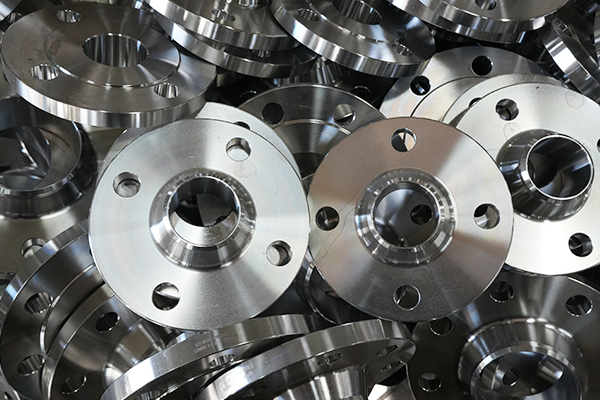NewsDetails
Detailed Explanation of Seamless Steel Pipe Size Specifications: The Impact of Pipe Diameter and Wall Thickness Parameters on Engineering Suitability
author:Zhantong time:2025-06-14 10:57:39 Click:168
Seamless steel pipes play an indispensable role in modern engineering fields, with their pipe diameter and wall thickness parameters directly determining material performance and engineering suitability. This article will delve into the size specifications of seamless steel pipes, providing professional references for material selection in engineering projects.
I. Basic Concepts of Pipe Diameter and Wall Thickness of Seamless Steel Pipes
(A) Concepts Related to Pipe Diameter
The outer diameter (OD) is a core indicator for describing the pipe diameter of seamless steel pipes, representing the diameter of the outer circle of the pipe's cross-section. It is commonly measured in millimeters (mm) in engineering and denoted by the symbol "Φ". The inner diameter (ID) refers to the diameter of the inner circle of the pipe and is closely related to the outer diameter and wall thickness, which can be calculated. Additionally, the nominal diameter (DN) is a standardized diameter set by humans to simplify the design, manufacturing, and installation processes. Although it has a corresponding relationship with the actual outer and inner diameters, it is not equivalent to them.
(B) Concepts Related to Wall Thickness
Wall thickness is a key parameter for measuring the strength and pressure-bearing capacity of seamless steel pipes, also measured in millimeters. According to different engineering requirements, wall thickness specifications cover a wide range from thin-walled to medium-walled and thick-walled pipes. In actual production, due to process constraints, there is a deviation between the actual wall thickness of the steel pipe and the theoretical value. The industry ensures product quality by setting tolerance ranges, with different standards having clear regulations on wall thickness tolerances.
II. Size Ranges of Pipe Diameter and Wall Thickness of Seamless Steel Pipes
(A) Classification of Pipe Diameter Size Ranges
Seamless steel pipes can be classified into small-diameter, medium-diameter, and large-diameter categories based on their outer diameter sizes. Small-diameter steel pipes are commonly used in precision instruments, small mechanical components, and low-pressure fluid conveyance. Medium-diameter steel pipes are widely applied in building structures and medium-pressure pipelines in the petrochemical industry. Large-diameter steel pipes primarily undertake key tasks in large-scale fluid conveyance and municipal engineering.
(B) Classification of Wall Thickness Size Ranges
Based on wall thickness differences, seamless steel pipes can be divided into three types: thin-walled, medium-walled, and thick-walled. Thin-walled steel pipes, with their lightweight characteristics, are suitable for weight-sensitive applications. Medium-walled steel pipes have the most extensive application scenarios, meeting the needs of most conventional engineering projects. Thick-walled steel pipes, with their high pressure-bearing and high-temperature resistance capabilities, play a crucial role in harsh working conditions.
III. Impact of Pipe Diameter and Wall Thickness Parameters on Engineering Suitability
(A) Impact on Fluid Conveyance Engineering
In the field of fluid conveyance, there is a specific functional relationship between pipe diameter and flow rate/velocity. Reasonable pipe diameter design can effectively improve conveyance efficiency, reduce energy consumption, and minimize pipeline wear. Wall thickness directly affects the pressure-bearing capacity of steel pipes, which needs to be determined through professional calculations based on factors such as medium pressure, temperature, and corrosivity to ensure the safe operation of the pipeline system. Under different working conditions, the selection of pipe diameter and wall thickness requires a comprehensive consideration of medium characteristics and engineering requirements to achieve a balance between performance and cost.
(B) Impact on Building Structure Engineering
In building structures, seamless steel pipes serve as key components, with their pipe diameter and wall thickness directly related to structural strength and stability. Different types of building structures have varying requirements for steel pipe sizes, necessitating precise selection based on stress conditions and design specifications. In earthquake-prone areas, optimizing the design of pipe diameter and wall thickness can significantly enhance the seismic performance of structures and ensure building safety.
(C) Impact on Mechanical Manufacturing Engineering
In mechanical manufacturing, seamless steel pipes are used to manufacture various components. The pipe diameter determines dimensional accuracy and fit requirements, while the wall thickness affects strength, stiffness, and fatigue life. Different mechanical products have special requirements for the dimensional accuracy and performance of steel pipes, and manufacturing processes also constrain the selection of pipe diameter and wall thickness. Decisions need to be made by comprehensively considering product requirements and process feasibility.
IV. How to Select Appropriate Pipe Diameter and Wall Thickness for Seamless Steel Pipes
(A) Determining Parameters Based on Engineering Requirements
When selecting seamless steel pipes, it is necessary to first clarify the characteristics of the conveyed medium, such as pressure, temperature, and corrosivity. Combined with the required flow rate, velocity, or load-bearing capacity of the engineering project, calculate the appropriate range of pipe diameter and wall thickness. At the same time, installation space and environmental conditions also need to be considered. In limited or complex environments, optimization design or the selection of special materials can be used to meet engineering requirements.
(B) Referring to Relevant Standards and Specifications
A series of standards have been formulated for seamless steel pipes both domestically and internationally, such as the domestic GB series standards and international API, ASTM standards. Different standards provide detailed regulations on the size, performance, and inspection methods of steel pipes. During material selection for engineering projects, it is necessary to strictly comply with the standards to ensure that the selected steel pipes meet quality requirements and guarantee engineering safety and reliability.
 Recommended Products
Recommended Products
 Contact us
Contact us
—— Contact:Manager
—— Tel:+86 15231788966
—— Email:info@zhantongpipe.com
—— Url:https://www.zhantongpipe.com
—— Address:Mengcun Hui Autonomous County, Cangzhou City, Hebei Province









